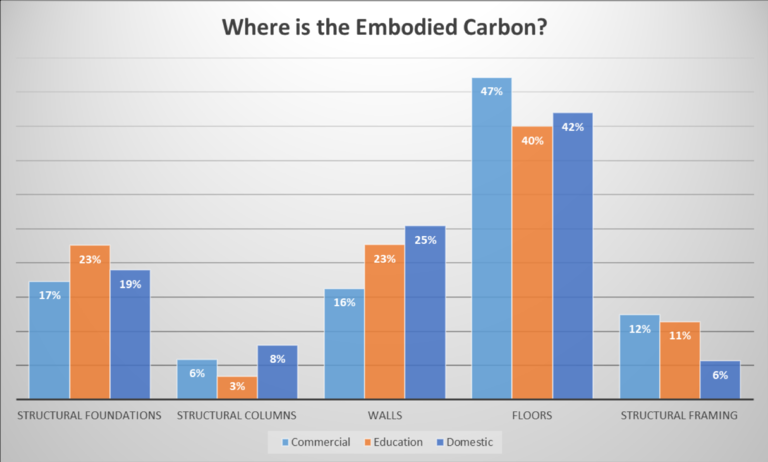
Date: 2024-12-21 Page is: DBtxt003.php txt00018056
Building Design
Embedded Carbon
Structural Engineers Study Embodied Carbon of 600 Buildings ... More than half of a building’s embodied carbon is in its bones, prompting research—and soon, a new Revit tool.
Peter Burgess

Graph: Thornton Tomasetti Which structural component would you expect to have the most embodied carbon? The foundation? The framing? The answer is actually the floors, according to an analysis of more than 600 buildings conducted by the engineering firm Thornton Tomasetti. (Disclosure: BuildingGreen’s president, Nadav Malin, is on Thornton Tomasetti’s Sustainability Advisory Board.) Structural engineering accounts for 55% of a typical new building’s overall embodied carbon, according to the firm. In an average commercial building, that impact is comprised of: floor slabs (47%) structural foundations (17%) walls (16%) structural framing (12%) structural columns (6%) To reduce the embodied carbon of structural systems, Thornton Tomasetti suggests alternatives like hollow-core slabs, voided slabs, or timber floors. The analysis also found that steel buildings had more embodied carbon in their structures than concrete or composite buildings. And LEED-certified buildings had lower average embodied carbon than non-LEED buildings (510 kg/m2 versus 590 kg/m2)—likely because LEED rewards the use of recycled steel and fly ash in concrete. After learning how influential structural engineering choices can be, Thornton Tomasetti is also building a tool for Revit that will allow users to optimize for low embodied carbon. Published January 7, 2020 Permalink